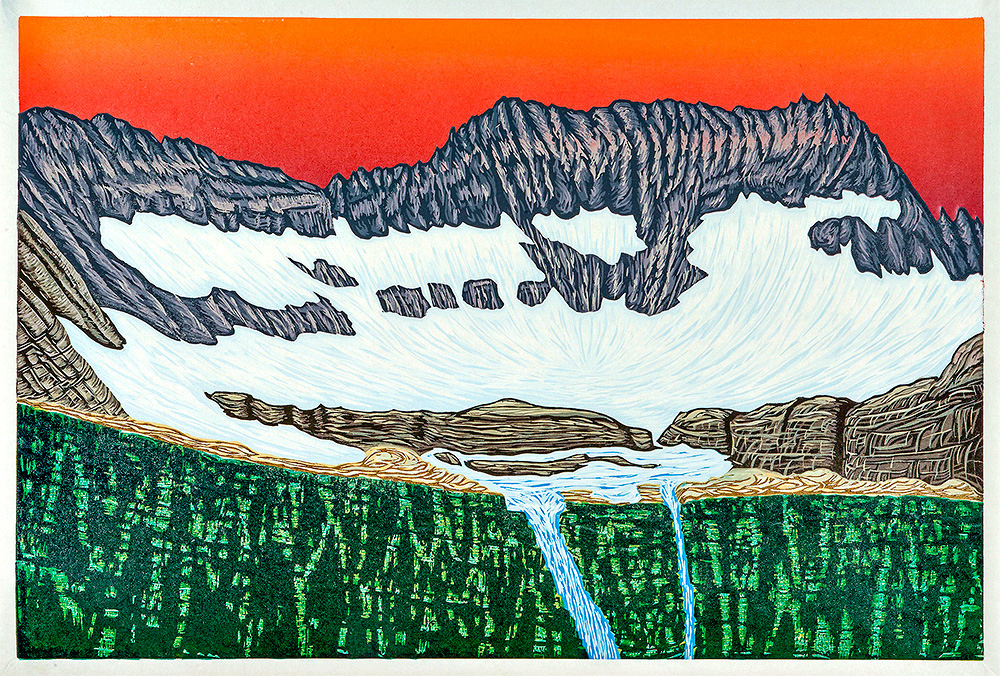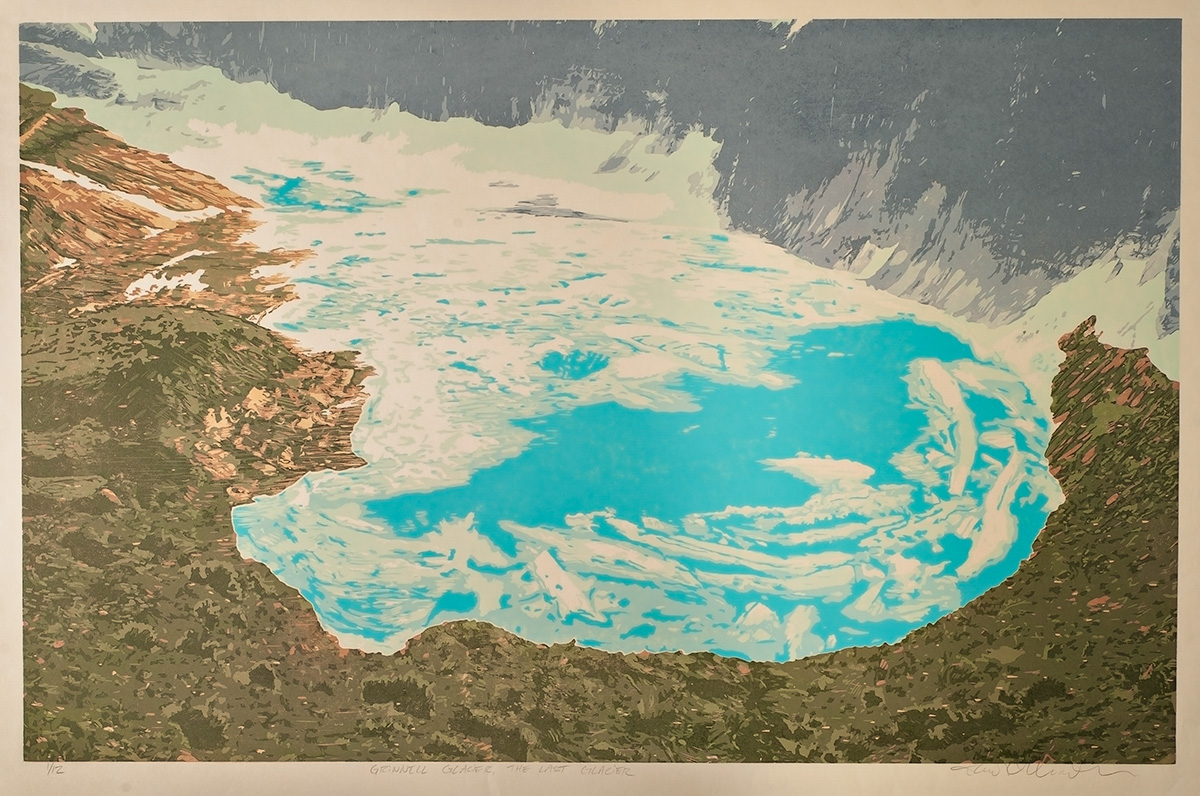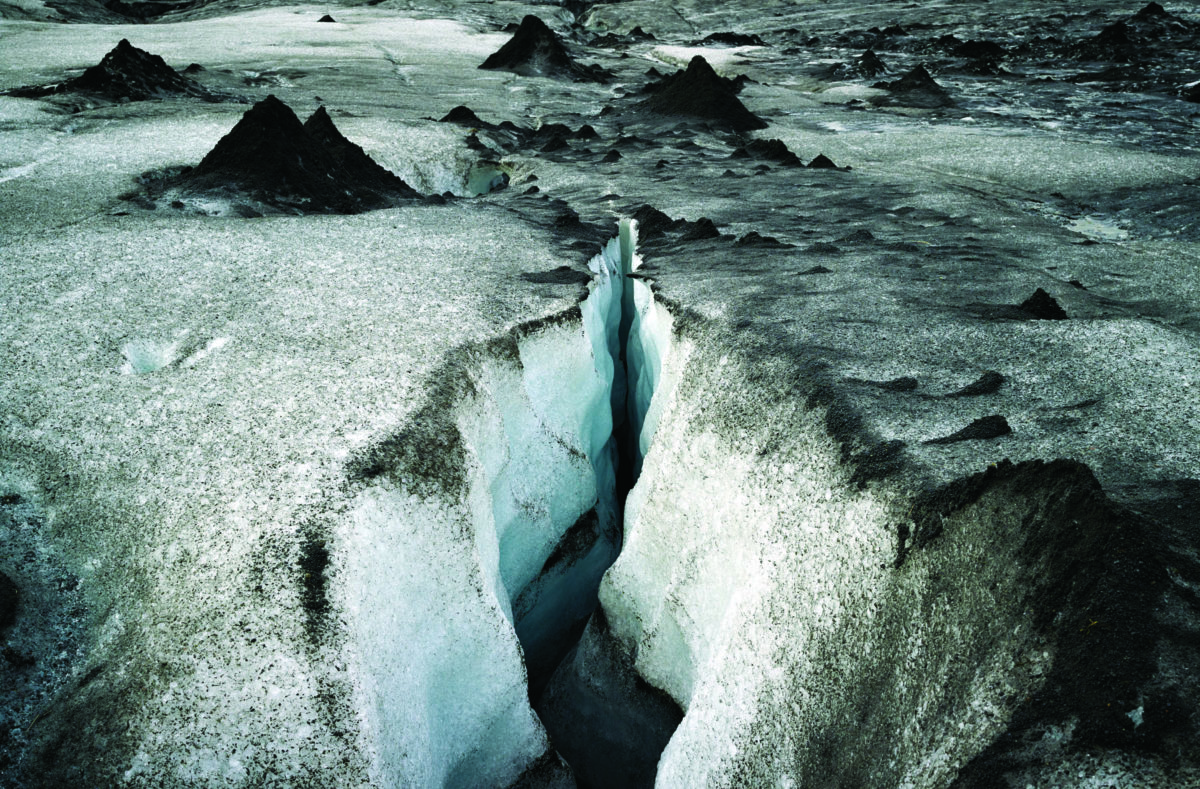The Last Glacier
New exhibit at the Hockaday Museum of Art showcases the efforts of two printmakers and a photographer to document the Crown Jewel of the Continent’s fading glaciers
By Myers Reece
After hiking in Glacier National Park and observing its melting glaciers in 2009, artists Bruce Crownover and Todd Anderson and photographer Ian van Coller had an aha moment.
“They realized, ‘We can really talk about the changes that are happening with the glaciers through our art,’” Hockaday Museum of Art Executive Director Alyssa Cordova said.
Over the ensuing years, the three men “hiked through valleys, up streams and over mountains to visit the last glaciers” of the Crown Jewel of the Continent, according to a description of their project, “The Last Glacier.” Of the 150 glaciers that existed in the park at the turn of the 20th century, only 25 remain today.
“The experiences of hiking, seeing and touching were transformative to the artists,” the description continues. “Glaciers, one of the mightiest forces of the natural world, revealed themselves as fragile and more responsive to human impacts than ever imagined.”
The project grew into an ongoing collaborative initiative with other visual artists, writers and scientists to produce a 648-page volume called “Extraction: Art on the Edge of the Abyss,” which documents and discusses the effects of climate change throughout the world, including in Iceland, Tanzania and Colorado. Crownover, Anderson and van Coller have also produced separate books of their art focused on specific regions.

The books and artworks have been shown at a number of major institutions, such as the Museum of Art, U.S. Library of Congress, Yale University and more, but the three artists’ work has never been curated into a full museum exhibition, until now, with the debut of The Last Glacier: Images of a Changing Landscape at the Hockaday.
The Last Glacier kicked off with a hybrid in-person and virtual reception on Feb. 18 with capacity limits and health precautions in place at the Kalispell museum. The artists appeared virtually.
“We’re really excited to show it,” Cordova said. “This is the first time the works have been shown framed as an exhibition, and to do it so close to Glacier Park, which was the inspiration for the project.”
The Hockaday exhibit consists of 35 original artworks, including van Coller’s photographs of glaciers taken in the park and around the world, colorful woodcut prints of glaciers using traditional Japanese-style printmaking techniques by Anderson and woodcut prints and watercolors by Crownover.
“The exhibition is part of a larger conversation the artists are having with scientists around the world about the changes they’ve observed and other environmental issues,” Cordova said.
And while the artworks may serve more as “poignant tributes rather than scientific documentation,” they contribute to that larger conversation.
“Just the visual impact of losing the glaciers, not to mention the environmental impact: Whether artists mean to or not, they ultimately become documenters of change, especially photographers, because they capture a moment in time,” Cordova said.

Accompanying the exhibit is the 648-page publication, which contains essays, artworks, poetry, photography and other contributions and is for sale for $15, with all proceeds donated by the artists to support the Hockaday. The artists have also contributed videos that are shown with the exhibit, detailing their thoughts on the works.
“Climate change is categorical, yet beauty, however temporal, still remains,” van Coller said. “As real time passes, The Last Glacier transforms into multi-generational artifacts that share stories of mortality and resiliency in the face of a changing planet.”
Crownover is an artist and master printer who lives and works in Wisconsin, while Anderson hails from South Carolina. Van Coller lives in Bozeman, where he teaches photography at Montana State University and was a 2018 Guggenheim Fellow.
“The idea of the exhibition is that it will inspire people to go into nature as they did and really contemplate our role as humans and our relationship with the environment,” Cordova said.
The exhibit is open to the public through June 19. Regular museum hours are 11 a.m. to 3 p.m. Tuesday through Friday and 11 a.m. to 4 p.m. on Saturday.
For more information, visit www.thelastglacier.com or www.hockadaymuseum.org.